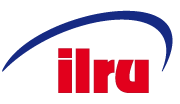Section 7: Operational Excellence and Evaluation
The Standards and Assurances for CILs provide the framework for keeping your CIL on track with both legal compliance and operational excellence. They serve as the basis for the monitoring tool that the OILP uses to determine whether CILs receiving federal funds are in compliance with the law and with the terms of their funding award.
Your CIL can use the same tool to evaluate yourselves as you strive for excellence in compliance with regulations and adherence to your own plans and policies.
Before we talk about the tool and process, let’s talk about why striving for excellence is important. And remember, excellence is not the same thing as perfection. Perfection is an unreachable goal. Excellence is absolutely achievable.
Excellence and Quality
Excellence is the state of possessing good qualities to an outstanding degree. Quality can mean different things to different people, but the definition usually includes some or all of the following[1]:
- A process or product that does what it is intended to do.
- Meeting the customer's needs in a way that exceeds the customer's expectations.
- Doing the right things right.
Why focus on quality?
Focusing on quality enables a CIL to answer these questions:
- Are we doing the work of the Center well?
- Are we using resources efficiently?
- Are we doing the right things?
- Are we doing what is important to constituents?
- Are we doing what is truly transformational?
The ability to answer these questions demonstrates that you are having the impact you want to have on your communities—people with disabilities having options and making choices about how and where they want to live and contribute to their communities. Being able to give a resounding “Yes!” answer to these questions demonstrates excellence.
You must be intentional about quality.
CILs are part of a movement. Movements seek to change the world. Weak, ineffectual, or dishonest Centers contribute to society’s negative perceptions about people with disabilities. Mediocre CILs will not facilitate change in their community. You must define and demonstrate quality to change the world.
Monitoring and Evaluation
Federal oversight of CIL grantees includes four broad components:
- Federal review of program compliance
- Federal review of outcomes
- Federal review of fiscal operations
- Provision of technical assistance
The OILP uses a three-tier system to evaluate and monitor CIL grantees:
- Tier one—includes a grantee dashboard completed over the fiscal year. (Reviewing the Program Performance Report.)
- Tier two—focuses on specific program(s) or fiscal issues.
- Tier three—includes comprehensive program and fiscal reviews, potentially in person and on site.
Compliance and Outcome Monitoring Protocol (COMP)
The Compliance and Outcome Monitoring Protocol (COMP) is the guide used to conduct CIL oversight and monitoring. The protocol and CIL Evaluation Tool are resources for OILP staff, CILs, and non-federal reviewers. The COMP guide and companion tools can be found on ACL’s IL COMP web page listed below.
The purpose of the COMP is to improve program performance.
- The Office of Independent Living Programs (OILP) relies on the COMP to provide consistent federal oversight of CIL grantees.
- Grantees may use the COMP to understand program and fiscal requirements and to conduct self-evaluations.
- Non-federal reviewers will use the COMP as a resource to ensure consistency during onsite reviews.
Even if you aren’t informed of a formal review, you can use the evaluation tools and other COMP materials to conduct a self-evaluation and identify any areas where you feel improvement is needed NOW.
Compliance is the foundation for building and measuring quality.
Do’s and Don’ts of a Self-Review
As you and other staff and board members conduct a self-review using ACL’s tools:
- Don’t just go down the checklist and mark it.
- Do actually locate and review the document or speak with the person that has the proof that you meet the item, and make notes.
- Do write that on your checklist so that you don’t forget your thoughts about each area.
- Do organize the papers that will document your compliance and demonstrate outcomes.
- Do ask yourself how you can exceed these expectations. Strive for excellence.
Resources for a Deeper Dive
- ACL’s Compliance and Outcome Monitoring Protocol (COMP), (https://acl.gov/programs/il-comp) COMP guide, evaluation tool, appendices, and fiscal review tool.
- Top 10 Mistakes That Can Put Your CIL or SILC at Risk, (https://www.ilru.org/training/top-10-mistakes-can-put-your-cil-or-silc-riskOn-demand IL-NET webinar covering key areas where a CIL can get into trouble—from financial management to consumer control.
[1] https://www.qualitydigest.com/magazine/2001/nov/article/definition-quality.html

